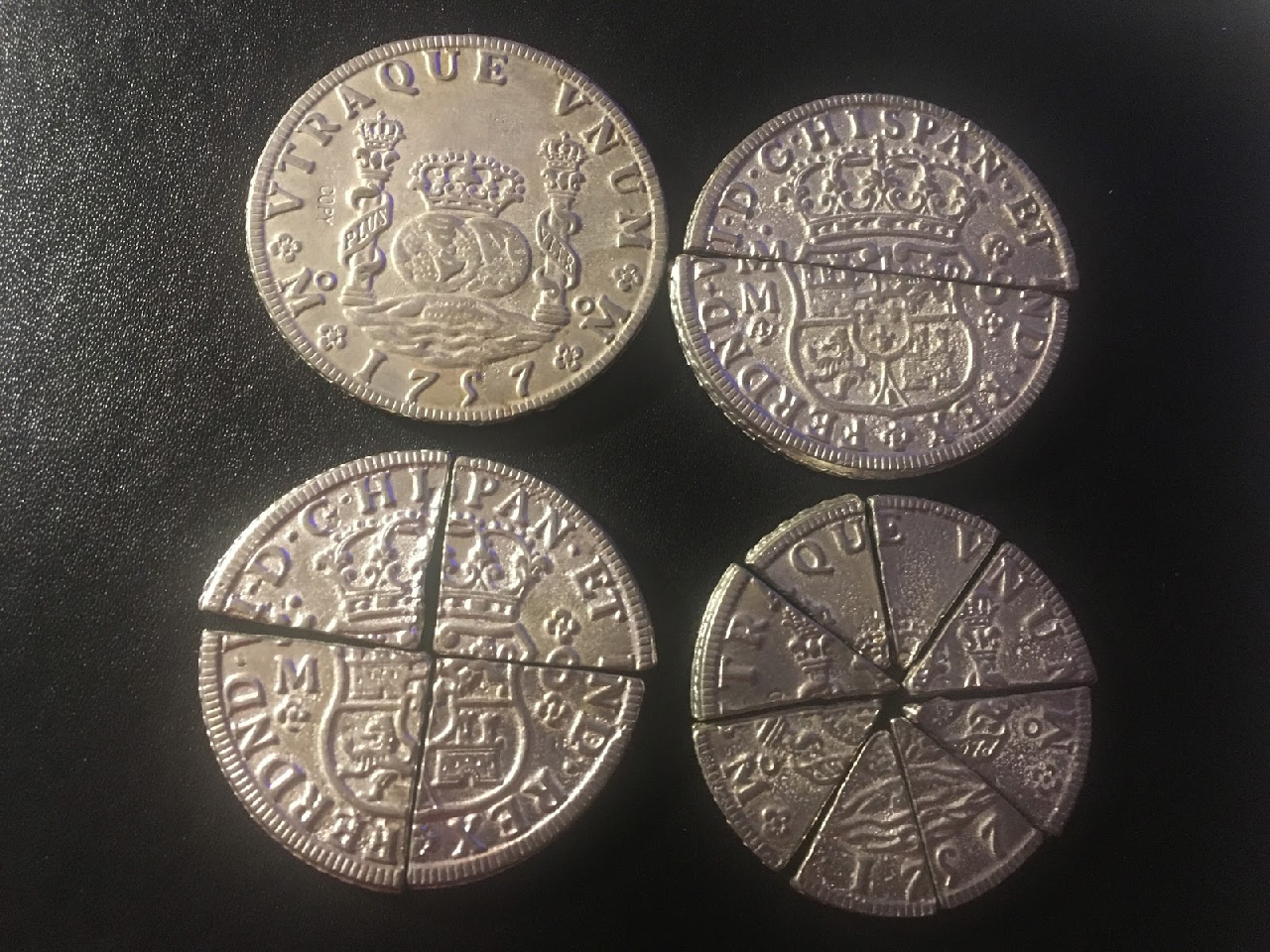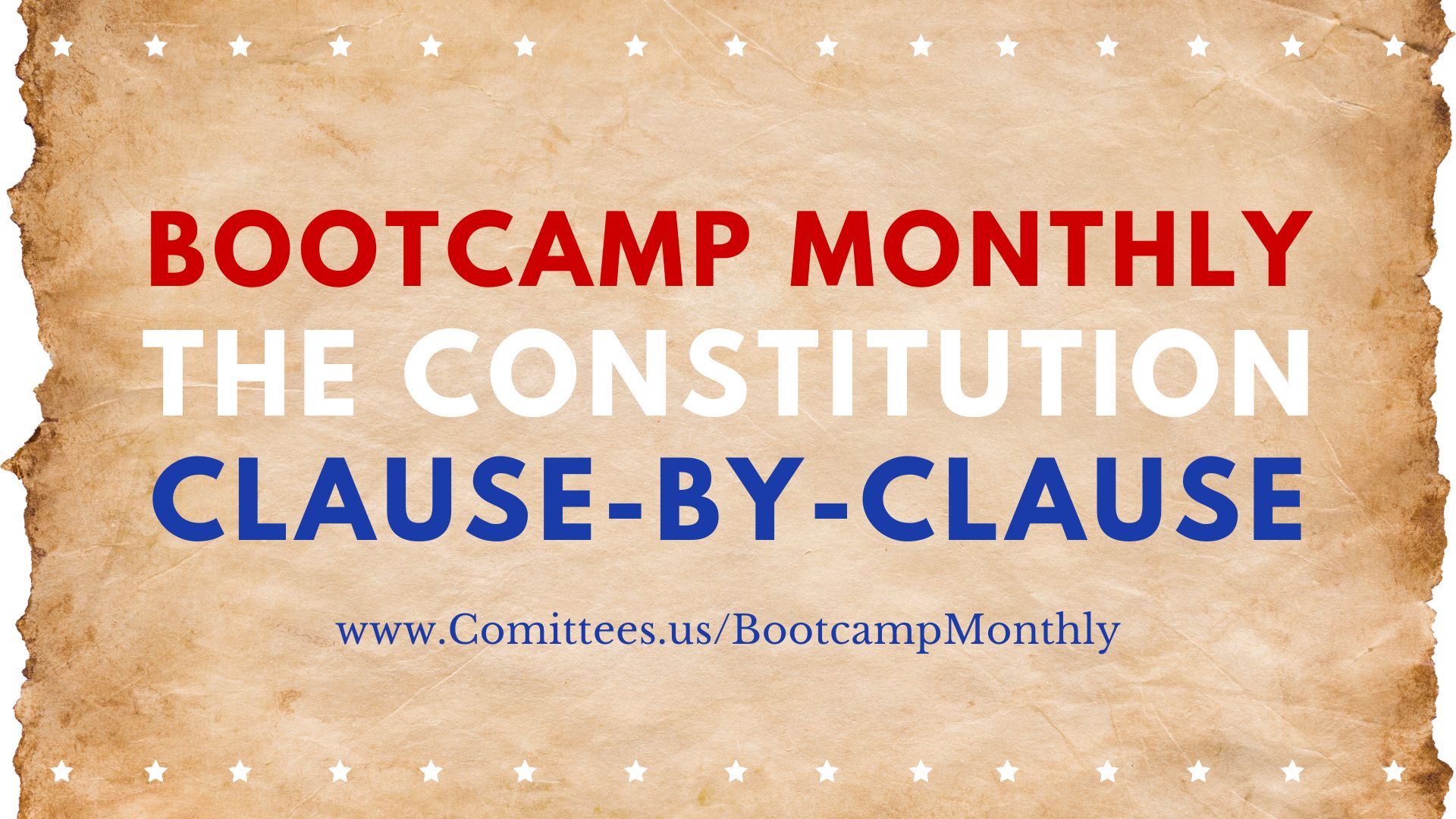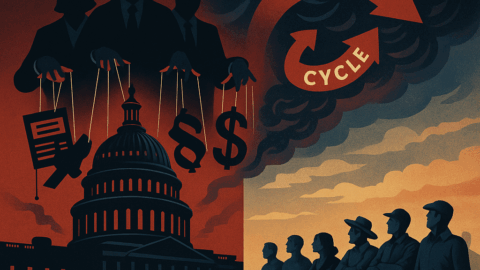Introduction
All the perplexities, confusion, and distress in America arise, not from defects in the Constitution or Confederation, not from want of honor or virtue, so much as downright ignorance of the nature of coin, credit, and circulation.
— John Adams, 1787 in a letter to Thomas Jefferson
One of the most misunderstood and misapplied powers granted to Congress is that power contained in these four words from Article 1 Section 8 of the United States Constitution:
Regulate the value thereof,
As well as the power granted by these four words also from Article 1 Section 8 of the U.S. Constitution:
and of foreign coin;
What are these powers? How are they misunderstood? How are these powers misapplied? What other equally misunderstood and misapplied monetary powers are there? A correct understanding is critical to understanding how these monetary powers are to be applied. How you, the reader can use this correct understanding to work for efforts to see that these powers are properly applied.
Furthermore, it is vital to understand:
Money, to the founders, was Gold and Silver Coin, wherever minted, stamped or coined
The power to issue “Bills of Credit” or redeemable paper money, was prohibited to both the Federal and State Governments
The power to issue irredeemable paper money, or money by mere fiat, was a power never even contemplated by the founders. Since it is not even mentioned it is a power denied to both the Federal Government and the States.
Congress could make gold and silver coins but had no power whatsoever to create paper money. So, what then, is meant by the four words, “REGULATE THE VALUE THEREOF?”
This article gives an answer to these perplexing questions.
Piezo de Ocho
It may seem strange or weird to Americans living in the twenty-first century that in the United States Constitution, a foreign coin is referred to as the Money-unit of our Nation, but that is exactly what the Constitution established. The term “Dollar” is referred to twice in the Constitution,(1) but, in 1787-1789, the only “Dollar” in existence was the Spanish milled dollar. The word “Dollar” is not defined in the Constitution, but no definition was necessary: Everyone familiar with economic affairs knew that the word meant the “silver Spanish milled dollar.”(2)
Beginning as early as 1704 the “piezo de ocho” or piece of eight, as the silver Spanish milled dollar was known, became, for all practical purposes, the money-unit of the American people. In 1704, Queen Anne issued a proclamation binding upon the American Colonies that declared that all foreign silver coins were to be “regulated, according to their weight and fineness” and compared to the standard of “the pieces of eight.”(3) Similarly in 1776, a committee of the Continental Congress declared that the Spanish milled dollar had become by default “the Money-Unit or common measure“(4) in use throughout the Colonies. In 1784 Congress used the “Spanish piece of eight reals, or, as the Americans called it, the dollar, as the unit of currency.”(5) Further, in 1785, Congress proposed the Spanish milled dollar as “the money unit” arguing that the “Dollar . . . has long been in general use” and “accords with the natural modes of keeping accounts“(6) and in 1786, Congress established the Spanish Dollar as the “money unit for computation. . . without a negative vote.”(7) Finally, after the adoption of the Constitution, Congress in 1792, under their authority to “coin Money“, legislated that any new “Dollars” coined were to be “of the value of a Spanish milled dollar“(8) but allowed the Spanish milled dollar to continue to circulate and to be accepted (when of full weight and not worn or clipped) “in the public offices” and “proceedings in the courts” (as well as the new “Dollars“) as the “Money of Account of the United States.”(9)
This early use of a foreign coin as our “Money of Account” is not the only strange aspect–to us modern Americans–of our monetary system: Consider the peculiar power of Congress to regulate the value of “foreign coin“(10) or the power to punish counterfeiters of not only United States coins but foreign coins (such as the Spanish Piece of Eight) which were made “current” in the United States?(11) Exactly what did our founders mean by these provisions?
Altogether There are six major provisions in the Constitution (including the Bill of Rights)(12) that deal with or refer to money. Each of these provisions must be considered and related to each other to thoroughly and properly understand the Founders intentions. However, this article will hone in on only one tiny, but extremely important, narrow aspect of these monetary powers and disabilities–an attempt to show–what the Founders meant by the power to “regulate value” and how this power was considered inseparable and related to the power to fix a “Standard.”
Furthermore, that Congress–as a whole–understood and followed the founders’ intentions concerning these powers as manifest in the debates in congress and every coinage act up to 1857. Furthermore, that the early U.S. Supreme Court was true and faithful to the founders’ intentions, as manifest by the majority decisions of the Court, up to 1870.
The power that Congress has to “regulate value” and fix a “standard” have an extensive English common-law history. As mentioned earlier, the Spanish milled dollar had become, by Queen Anne’s Proclamation of 1704 at least, the “common measure“, or standard by which all other gold and silver coins were to be measured in the colonies. In other words, samplings could be taken of various foreign (or domestic) silver coins and assayed to determine the fine silver content and then compared against the amount of fine silver contained in the Standard–the Dollar. Thus, technically speaking, the American colonies were on a silver standard.(13) Gold coins could be likewise assayed for fine gold content and then the free market ratio between gold and silver, used to determine its value. Any coin, whether Gold or Silver, was to be compared with the standard and valued proportionately. In other words, foreign coins could be declared “legitimate foreign coin,” by declaring “at what value it shall be taken in payments,” which was accomplished by “comparison with the standard,”(14) which was fixed by the king and was to be of a “given weight. . . of a given fineness” which would then be a “true standard.”(15)
Thus we see that the Common law of England, as applied in the Colonies, understood the power to “regulate value” as part and parcel of the power to fix a “standard.”(16) To put it very simply, you can’t regulate value without a standard to measure it by. These twin powers were to be used in conjunction with each other. Again, let it be firmly set in your mind: you cannot properly “regulate value” without a properly “fixed standard;” likewise, you cannot properly provide an adequate monetary system without “fixing a standard.” These two powers are inseparable from each other, yet they are entirely different and distinct powers.
After the Colonies declared independence and split with England, the Coinage policy of the Continental Congress paralleled this traditional common-law approach. A committee of the Continental Congress in 1776 prepared a table of values of various silver and gold coins relative to the Spanish milled dollar which were “estimated. . . according to the quantity of fine silver they contain[ed]” in the case of silver coins and in the case of gold coins “the value of fine gold they contain[ed] and the proportion. . . which fine gold bears to that of fine silver in the marketplace.”(18) In 1786, a congressional Board of treasury stated that it was the intention of Congress to adopt as the “Money-Unit” the “common dollars (or Spanish milled dollars)” and further determined that any new Units or Dollars coined were to contain “three hundred and seventy five grains and sixty four hundredths of a Grain of fine silver” (effectively setting a standard).(19) The Board also stated that “the difference that Custom has established between coined gold and silver, in the United States,” or in other words the free market ratio between gold and silver, should be a basis for establishing the relative value of such gold and silver coins.
Under the newly formed Constitution of the United States, Congress in 1792, established a mint and authorized the minting of both silver and gold coins. The “Standard” was established by making the “Dollar” the “Money of Account of the United States” which all public offices and courts were bound to accept, and defining that “Dollar” as “371.25 grains of pure silver“(20) which was the average weight then of the Spanish Piece of Eight.(21) Gold coins in the form of “Eagles“, “Half Eagles“, and “Quarter Eagles” were also authorized.(22) The ratio between gold and silver (as then deemed accurate by the free market) was established as 15:1.(23) The Eagle was to be “of the value of ten dollars or units” so its weight was defined as 270.5 grains of pure gold (each “dollars” worth of value being 24.75 grains of gold or 1/15 of 371.25 thus keeping in line with the ratio of 15:1). Lesser Gold and Silver coins were also authorized and their respective “weights” and “values” were also determined by the standard–371.25 grains of silver. Thus Congress “fixed” the standard of value as 371.25 grains of pure silver, called this weight of silver a “Dollar“, and “regulated” the value of other gold and silver coins (the newly minted coins whether gold or silver, the Spanish Dollar, and other foreign gold or silver coins) according to this standard.
It is important to note that gold coins, taking the Eagle as an example, was not denominated in terms of “dollars” but was simply called an “Eagle” which had an intrinsic free market worth “of the value of ten dollars.”(24) This is a hard concept for some to grasp. That the Eagle is “of the value of ten dollars,” it isn’t ten dollars itself. It’s an Eagle. Likewise, the half Eagle and quarter Eagle. They were only “of the value of” five dollars and two and a half Dollar respectively. The Dollar was a Dollar and an Eagle an Eagle.
Thus, in the Colonies and later under the Government of the United States Constitution, a fixed weight of silver was recognized as the standard by which to measure all other coins both gold and silver. Adam Smith notes how the general public largely understood the concepts of “fixing” a standard and “regulating” the value of coinage:
. . . as people become gradually more familiar with the use of different metals in coin, and consequently better acquainted with the proportion between their respective values, it has in most countries. . . been found convenient to ascertain this proportion, and to declare by a public law, that a guinea (of gold), for example, of such a weight and fineness, should exchange for one and twenty shillings (of silver) or be a legal tender for a debt of that amount. In this state of things, and during the continuation of any one regulated proportion of this kind, the distinction between the metal which is the standard, and that which is not the standard, becomes little more than a nominal distinction.(25)
Adam Smith, An Inquiry into the Nature and Causes of the Wealth of Nations (1776), Book I, Chapter 5 (emphasis is mine).
The casual reader or layman can stop here if you can firmly grasp these concepts. The curious or scholarly can continue.
Vieira notes how the founders used precise linguistic wording in their use of the phrases “fix the standard” and “regulate. . . value” and subtly diverge in meaning:
The phrase “fix the standard” empowers Congress to define the basic units of “Weights and Measures“; whereas, the phrase “regulate the Value” empowers Congress only to apply the basic unit of “Value“, which the constitution elsewhere explicitly identifies as the “dollar“, a known, historically fixed weight of silver. Moreover, whereas the verb “fix” as applied to “Weights and Measures” implies “stability and confirmation“, the verb “regulate” as applied to coinage implies continuous adjustment. . . the Framers. . . in one phrase selecting the verb that connotes the establishment of permanent “Standards“, without which a system of “Weights and Measures” could not serve its purpose; and, in the other, choosing the synonym that connotes a process of inter-comparisons among changing forms of coinage, according to a set “Money-Unit“, without which a monetary system involving both gold and silver could not achieve its end.(26)
The U.S. Congress remained faithful to this particular monetary understanding until 1857. For instance, in the coinage act of 1793, Congress recognized the need to make “current” various foreign coins (in other words to make these coins more popular in everyday use) by enacting a statute regulating their value and declaring that these “foreign gold and silver coins shall pass current as money within the United States. . . at [specified] rates“. At the same time however, Congress anticipated an adequate supply of United States coin by providing that “all foreign coins except Spanish milled dollars shall cease to be a legal tender” (Congress thus once again endorsing the Spanish milled dollar as the basic unit of the country).(27)
By 1834 two major problems had surfaced: First, the free market valued gold at a rate closer to a 16:1 ratio than the 15:1 ratio determined by the Coinage Act of 1792; Second, Banks proliferated–and began an over-issuance of paper currency. Because the free market value of gold was higher than the ratio established by Congress, due to the actions of Greshams law(28), gold began to disappear from currency. The Coinage Act of 1834 addressed these two interrelated problems: First, by fixing the ratio between gold and silver at 16:1, and consequently because of this ratio change, authorized the Coining of new Eagles, Half Eagles, and Quarter Eagles of reduced weights(29), each to be of the value of ten dollars, five dollars and two Dollars and fifty cents respectively; Second, by changing to a higher ratio between silver and gold an attempt was made to “strike a fatal blow at the ability of banks to sustain a circulation of small-denomination currencies.”(30)
In relation to the Act of 1834(31) , First, the Select Committee on Coins again stressed that the thing to be desired “in the monetary system is a standard of uniform value” and that this standard should be silver “the ancient currency of the United States, the metal in which the money unit is exhibited“(32) . Second, Congress set the “Value” of the (gold) Eagle by referring to the (silver) dollar, at the newly accepted market exchange ratio, just as it had done in 1792. Third, Congress declared that gold coins minted before the effective date of the act should be valued thereafter at their intrinsic values according to the revised exchange ratio. Finally, just as in 1792, Congress made the new “gold coins . . . receivable in all payments, when of full weight, according to their respective values; and when of less than of full weight, at less values, proportioned to their respective actual weights” showing once again its understanding that “To . . . regulate the Value” of a coin means to state its intrinsic value (in weight of precious metal) as against the standard, and to make it “current” or legal tender for that “Value” only. (33)
In 1837 Congress enacted a “supplement” to the Coinage Act of 1792. This act retained the amounts of pure silver and pure gold in the various silver and gold coins but merely adjusted the alloy content of both silver and gold coins. In the case of the “Dollar,” the amount of pure silver remained at 371.25 grains, and for the “Eagle,” came as close as possible or within 0.086% of its weight as constitutionally regulated in 1834.(34) Thus the Coinage act continued the principles first laid down in 1792.
The Coinage act of 1849 authorized the coinage of a small gold coin “each to be of the value of one dollar or unit” which was one-tenth the weight of an Eagle as defined by the Coinage Act of 1837. Congress was careful however, to refer to this new gold coin not “as a dollar, or the dollar, but as ‘being of the value of one dollar” thus referring to this coin in terms of “regulating its Value as against the original (silver) standard [371.25 grains of silver], not in terms of defining a new, or competing standard.”(35)
When Congress reset the ratio between gold and silver at 16:1 in 1834 everyone expected gold to continue to appreciate in value against silver. Instead, due to the discovery of huge gold deposits in California and Australia, the opposite situation occurred. The Free Market first began to value gold at around a 15.7:1 ratio at which point, again due to Greshams Law, Silver Coins ceased to circulate (just as the gold coins had stopped circulating when gold was valued higher in the free market than at the legal ratio). When the ratio diminished to a 15.5:1 ratio, it became possible to melt and export silver coins at a profit. Congress failed to readjust a proper free market ratio between gold and silver at this time but did act To remedy an inadequate supply of silver coinage, by reducing the weight of the half dollar so that the amount of pure silver in two half dollars only amounted to 93.1% of the amount in the Constitutional Dollar.(36) Congress however, limited the legal tender ability of these coins to payment of debts. . . not exceeding five dollars. Although these coins met the old common law standard of “not [being] upon the same footing with the other [Constitutional Coins]“(37) the wisdom of Congress in not properly regulating a proper ratio between silver and gold is highly suspect.
By 1857, Congress apparently thinking that the United States had enough of their own coinage, repealed “all former acts authorizing the currency of foreign gold or silver coins, and declaring the same a legal tender in payment of debts.”(38) So, for the first time since Queen Anne’s Proclamation of 1704, the actual Spanish dollar ceased to be the “money of account” in the United States, being replaced by the United States Silver Dollar first authorized in 1792.
From 1792 through 1857, Congress consistently interpreted Art. I, Sec. 8, Cl. 5, or the powers to “Coin Money,” “regulate the value,” and “fix a standard,” the way that English common law and pre-constitutional history support. For over sixty years from ratification of the Constitution till just before the Civil War did Congress ever:
- Coin any metal as “Money” other than gold, silver or copper
- Change or vary from the constitutional standard of value–the dollar–as defined as 371.25 grains of pure silver
- Regulate the value of any foreign or domestic coin (except for small denomination subsidiary coins, used primarily to provide “change”) at other than what Congress determined in good faith was its intrinsic value in relation to the dollar
- Declare any coin (with the exception of small denomination subsidiary coins) a legal tender for more than its intrinsic value
- Claim that it had any power whatsoever to do otherwise in any of these particulars
The early Supreme Court decisions remained true to the common law and U.S. Constitutional monetary tradition. The Court making such remarks as that it was regarded as an “important trust” to maintain the standard of value and that Congress had an “obligation to fulfill that trust (39).
Regarding the concept of fixed standards, the Supreme Court, In 1857, wrote that:
The policy of the Constitution was to provide a fixed and uniform standard of value throughout the United States, by which the commercial and other dealings between the citizens thereof, or between them and foreigners, as well as the moneyed transactions of the government should be regulated…and why establish a standard at all, for the government of the various contracts which might be entered into, if the contracts might afterwards be discharged by a different standard? (40)
And that Congress has the:
trust and duty of creating and maintaining a uniform and pure metallic standard of value throughout the United States. The power of Coining Money and of regulating its value were delegated to Congress by the Constitution for the very purpose, as assigned by the framers of that instrument, of creating and preserving the uniformity and purity of such a standard of value…Whatever functions Congress are, by the Constitution authorized to perform, they are, when the people’s good requires it, bound to perform, and on this principle, having emitted a circulating medium, a standard of value indispensable for the purposes of the community, and for the action of the government itself, they are accordingly authorized and bound in duty to prevent its debasement and expulsion.” (41)
And that:
[The] power of regulation is a power to determine the weight, purity, form, impression, and denomination of the several coins and their relation to each other, and the relations of foreign coins to the monetary unit [or standard] of the United States.”
Paul Bakewell, in his book, “Thirteen Curious Errors about Money,” wrote in summarizing these early statements of the Supreme Court that:
A standard of value is indispensable for the purposes of the Nation and for the action of the government itself
The trust and duty of maintaining and preserving the uniformity and purity of the metallic standard of value is an obligation of the government imposed by the Constitution
Having emitted a Standard of Value, Congress is bound in duty to prevent its debasement
Fast forward to the present day, and it becomes clear that we Americans have largely forgotten and forsaken our monetary roots and our common law heritage. Well might it be said of us that “Thy silver is become dross, thy wine mixed with water“. (42) Of course Isaiah here is talking about Israel’s collective apostasy but it is interesting that Isaiah would talk about it in terms of their monetary system. As is the case with much of Isaiah–there is a multiple meaning at work here and he just might have meant their monetary apostasy as well. Perhaps modern America would do well to repent from this apostasy so that the Lord can “purge away [our paper money] dross, and take away [our monetized debt] tin“.(43)
ENDNOTES
- Article 1 Section 9 Clause 1 and the Ninth Amendment.
- Edwin Vieira Jr., Pieces of Eight: The Monetary Powers and Disabilities of the United States Constitution: A Study in Constitutional Law, p. 62.
- An Act for ascertaining the Rates of foreign coins in her majesty’s Plantations in America, 1707, 6 Anne, ch 30, Section I.
- “all silver coins…to be estimated…according to the quantity of silver they contain” and “gold coins…according to the quantity of fine gold they contain and the proportion…which the value of fine gold bears to that of fine silver” in the free market. (Vieira, Op Cite, pg. 16.)
- George Bancroft, The Constitution of the United States, p. 159
- Vieira, Op cite.
- Bancroft, Op cite, pg. 159.
- The Mintage act of 1792 as published in The Mint and Coinage acts of the United States, by Charles Weisman, 1987.
- 1st Coinage Act of 1792.
- Article 1, § 8, clause 5,
- Article 1, § 8, clause 6
- Article 1, § 8, clause 2. The Congress shall have Power . . . to borrow Money on the credit of the United States. Article 1, § 8, clause 5. The Congress shall have Power . . . To coin Money, regulate the Value thereof, and of foreign Coin, and fix the Standard of Weights and Measures. Article 1, § 8, clause 6. The Congress shall have Power . . . To provide for the Punishment of counterfeiting the Securities and current Coin of the United States. Article 1, § 9, clause 1. The Migration or Importation of such Persons as any of the States now existing shall think proper to admit, shall not be prohibited by the Congress prior to the Year one thousand eight hundred and eight, but a Tax or duty may be imposed on such Importation, not exceeding ten dollars for each Person. Article 1, § 10, clause 1. No State shall . . . coin Money; emit Bills of Credit; make any Thing but gold and silver Coin a Tender in Payment of Debts . . . Amendment VII. In suits at common law, where the value in controversy shall exceed twenty dollars, the right of trial by jury shall be preserved.
- Note the following statements by Vieira:
The current popular concern with a “gold standard”, and the long-standing notion that the United States operated on such a standard until the 1930’s prompt one further clarification of the nature of the Constitution’s monetary system. Technically, adoption of the (silver) dollar as the national money of account places the country on the “silver standard“, in the sense that the constitutional unit consists of that metal.
In practice, however, both silver and gold are equally “standards” of the system, because “regulation” of all gold coinage in terms of the (silver) dollar must faithfully reflect the prevailing exchange-rate between the metals in the free market–and, therefore, the explicit constitutional “silver standard” is really just the reciprocal of an implicit “gold standard”, and vice-versa.” (Vieira, pg. 90-91.)
A doctrinaire, monometallic “silver standard” or “gold standard” can emerge only if Congress misapplies its monetary powers. As Von Mises points out, in the nineteenth century “the demonetization of silver and the establishment of gold monometallism was the outcome of deliberate government interference with monetary matters. . . [I]t was not the intention of the governments to establish the gold standard. What the governments aimed at was the double standard. They wanted to substitute a rigid, government-decreed exchange ratio between the independently coexistent gold and silver coins. The monetary doctrines underlying these endeavors misconstrued the market phenomena in that complete way in which only bureaucrats can misconstrue them. The attempts to create a double standard of both metals . . . failed lamentably. It was this failure which generated the gold standard. The emergence of the gold standard was the manifestation of a crushing defeat of the governments and their cherished doctrines“. (Ludwig Von Mises, Human Action, ante note 2, at 471. also quoted by Vieira in note 374 pg. 91)
Alexander Hamilton expressed that “a preference ought to be given to neither [gold or silver]” but realized that there were practical problems arising “from the fluctuations in the relative [market] value of the metals.” But Hamilton felt this problem could be overcome if “care” was “taken to regulate the proportion between them with an eye to their average commercial value” and that the ratio between gold and silver should “approach as nearly as can be ascertained, the . . . average proportion. . . in . . . the commercial world” and that “there can hardly be a better rule in any country for the legal than the market proportion” and that each “metal would “find its true level, according to their intrinsic utility” if produced by “the free and steady course of commercial principles“. (Alexander Hamilton, Report on the Subject of a Mint, p. 2060-2061)
- “Money is an universal medium, or common standard, by comparison with which the value all merchandize may be ascertained:. . . a sign, which represents the respective values of all commodities. Metals are well calculated for this sign, because they are durable and are capable of many subdivisions: and a precious metal is still better calculated for this purpose, because it is the most portable. A metal is also the most proper for a common measure, because it can easily be reduced to the same standard in all nations: and every particular nation fixes on it it’s own impression, that the weight and standard (wherein consists the intrinsic value) may both be known by inspection only. . .
The coining of money is in all states the act of the sovereign power; for the reason just mentioned, that it’s value may be known on inspection. And with respect to coinage in general, there are three things to be considered therein; the materials, the impression, and the denomination.
With regard to the materials, sir Edward Coke lays it down, that the money of England must either be of gold or silver; and none other was ever issued by the royal authority till 1762, when copper farthings and half-pence were coined by king Charles the second. . . But this copper coin is not upon the same footing with the other in many respects. . .
As to the impression, the stamping thereof is the unquestionable prerogative of the crown. . .
The denomination, or the value for which the coin is to pass current, is likewise in the breast of the king. . . In order to fix the value (note that Blackstone could easily have substituted for his language “fix the value” the equivalent phrase “regulate the value” as later appeared in Article I, Section 8, cl. 5 of the Constitution. For the two verbs are synonymous. E.G. Black’s Law Dictionary (4th red. ed. 1968), at 1451, defines “regulate” as “to fix, establish, or control“.), the weight and the fineness of the metal are to be taken into consideration together. When a given weight of gold or silver is of a given fineness, it is then of the true standard, and called sterling metal. . . And of this sterling metal all the coin of the kingdom must be made, by the statute 25 Edw. III c. 13. So that the king’s prerogative seemeth not to extend to the debasing or enhancing the value of the coin, below or above the sterling value. . . The king may also, by his proclamation, legitimate foreign coin, and make it current here; declaring at what value it shall be taken in payments. But this . . . ought to be by comparison with the standard of our own coin; otherwise the consent of parliament will be necessary.” (William Blackstone, Commentaries, ante, note 10, at 276-278, as quoted by Vieira, pg. 4)
- Ibid.
- “From 1603 through 1816, England followed a bimetallic monetary policy, whereby the law made no change in the character of the silver coinage, but altered the weight and denomination of the gold coinage in order to secure the concurrent circulation of both.” (S. Breckenridge, Legal Tender: A Study in English and American Monetary History, [1903], at 43-46)
- H. Bronson, “An Historical Account of Connecticut Currency, Continental Currency, and the Finances of the Revolution”, New Haven Historical Society Papers, No. 1 (1865), at 14, 26; Davis, “Currency and Banking in the Province of Massachusetts Bay” (pt 1), Pubs. Amer. Econ. Ass’n (3rd ser.), Vol. 1, No. 4 (1900), at 38; J. Felt, An Historical Account of Massachusetts Currency (1839), at 26. As quoted by Vieira, pg. 5)
- 5 Journals of the Continental Congress, ante note 37, at 714-25. as quoted by Vieira, pg. 16.
- Vieira, pg 17.
- Thomas Jefferson at first (before he saw the wisdom of maintaining the standard of the piece of eight) advocated making the original money unit or dollar (A silver coin) of the weight of one ounce or one cubic inch, rainwater exactly, ‘measures, weights and coins, thus referred to standards unchangeable in their nature would themselves be unchangeable. (Jefferson’s Writings by H. A. Washington, Vol VII p. 490 as quoted in Paul Bakewell, “Thirteen Curious Errors about Money,” p. 49)
It was upon Alexander Hamilton’s suggestion that the United States adopt as its standard the already existing standard–that of the Spanish piece of eight. Hamilton had a study performed of the average weight of the piece of eight (which was determined to be 371.25 grains of pure silver) and in his report for the 1st Coinage Act stated: “There is scarcely any authority in the economy of national affairs of greater moment that the uniform preservation of the intrinsic value of the money unit” (Annals of the First Congress, vol II, p. 211 as quoted by Bakewell p. 490)
- Weisman, pg. 16-19.
- Ibid.
- Ibid.
- Weisman, pg. 17.
- Adam Smith, An Inquiry into the Nature and Causes of the Wealth of Nations (1776), Book I, Chapter 5 (emphasis is mine).
- Vieira, pg 51.
- Vieira, pg. 101.
- Bad money drives out good
- “Each Eagle shall contain two hundred and thirty-two grains of pure gold. . . Each Half Eagle one hundred and sixteen grains of pure gold. . .each Quarter Eagle shall contain fifty-eight grains of pure gold” (Coinage Act of 1834, as quoted by Bakewell, pg. 56.)
30.Vieira, pg. 115.
31.The United States Supreme Court in 1870 (as well as all later decisions of the Court), grossly misunderstood the Coinage Act of 1834.(33) Characterizing it as Viera says, a debasement of the “gold standard, a devaluation of the dollar, an expropriation of creditors, an impairment of the obligation of contracts, or an excercise of some supposedly unlimited legislative power to transmute the denominations of coins without reference to their intrinsic values!”(34) Vieira, further explains in refutation of this misunderstanding by the Supreme Court that:
First, on the face of the act, nothing “was taken from the weight of each dollar“. The act changed the intrinsic values (in weight and fineness) of gold coins, to be sure–but, neither in 1834 nor at any previous time was there or had there been a “gold dollar”, from which any “weight” could be “taken“. The act made no change in–indeed, said nothing about–the silver dollar. Instead, the act sub silentio retained the dollar, unchanged, as Congress had defined it in 1792, and once again used the dollar as the standard by which to “regulate” the new gold coinage.
Second, on the face of the act, no “creditors were subjected to a corresponding loss” through any “debasement” of the gold coinage. Again, the act changed the intrinsic values (in weight and finess) of gold coins in order properly to “regulate the Value” of those coins as against the immutable silver standard. But this was nether a “debasement” of the coinage nor an “expropriation” of creditors in any constitutional sense of those terms.(35)
32.Report of 17 February 1834, in 10 id, Appendix, at 245, 246. Daniel Webster made this comment on the Dollar as the fixed unit of value or standard:
The Constitutional standard of value is established and cannot be overthrown. (Webster’s Works, pp. 271-280 as quoted in Bakewell p. 49)
33.Ibid.
- Vieira, pg. 112.
- Vieira, pg. 112-113.
- Coinage Act of 1837
- Coinage Act of 1849
- Vieira, pg. 120.
- 12 Wheaton p. 265
- Ibid.
- 9 Howard, p 568
- Isaiah 1:22
- Isaiah 1:25







